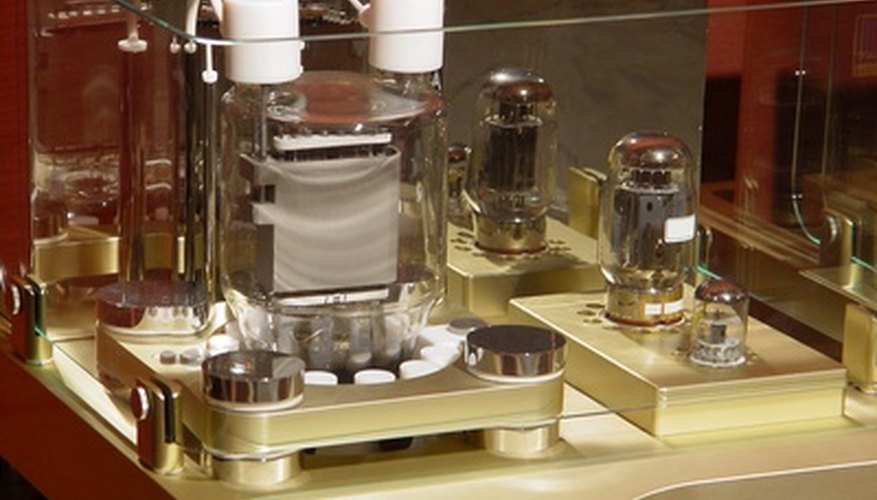There are a variety of bass amp kits available online, but where is the fun in using a kit? A hand-wired amplifier is a relatively simple do-it-yourself project. The fun isn't necessarily in the building, it's in finding the parts. The educational value of building your own bass amp is indispensable. Just understanding how feedback occurs makes the exercise worthwhile. Any person with a mechanical mind can build their own bass amp. Competency around electricity is also necessary.
- There are a variety of bass amp kits available online, but where is the fun in using a kit?
- The educational value of building your own bass amp is indispensable.
Decide on what kind of sound you like. A vintage Kay amp has a sweet sound and gives almost 80 per cent output when using a 6V6 power tube.
Purchase 50L6 tubes from any electronics store. These tubes are plentiful and used most often in radios. Be warned, they are not cheap.
Select the components based on necessity. Don't chase a sound you think a tube provides. Get the best tube for the price and build the desired sound around your tube selection.
- Decide on what kind of sound you like.
- Don't chase a sound you think a tube provides.
Increase the practicality of the bass amp by integrating off-the-shelf resistors into the amplifier construction.
Determine the wattage for the power tube, the power supply and what the remaining wattage is. For a bass amp the power tube wattage is between 5 and 10 watts. The power supply is between 2 and 5 watts. There is a 1/2 watt remaining in this equation.
Find a flat piece of steel. Clamp one side of the steel sheet to your workbench. Push down on the steel until it is at a 90 degree angle. This is the chassis of the bass amp. Sharpen the angle by pounding the top of the steel sheet at the edge of the workbench. Use a rubber mallet to form a carpenter's square.
- Increase the practicality of the bass amp by integrating off-the-shelf resistors into the amplifier construction.
- This is the chassis of the bass amp.
Drill holes into the chassis. These holes hold the power tubes and are 1 inch wide. A nibbling tool is required, since the dimension is too large to drill. Make the rest of the holes in the chassis with a die punch.
- Drill holes into the chassis.
- Make the rest of the holes in the chassis with a die punch.
Pick the right power transformer. Read the data sheets for the power tubes and determine the appropriate voltage. The most commonly used voltage is 200V.
Design the circuitry in this way: B.1: 190V, B.2: 180V and B.3: 120V. Create a false centre tap and only light the main transformer and the power tubes in the bass amp.
- Design the circuitry in this way: B.1: 190V, B.2: 180V and B.3: 120V.
- Create a false centre tap and only light the main transformer and the power tubes in the bass amp.
Install the plate resistor and cathode resistor by soldering each individual component to the chassis. Tone comes from these two components.
Insert the tone control knob and the volume control knob into the punched holes in the chassis. Insert the Class A tube now. A Class A amp gives a warm rich sound and reduces feedback.
Read the data sheet for the power tubes and determine the ohms needed for the tubes. The range of ohms is 1711 and 1805. Do not use a single-ended transformer. Saturation is much quicker when using a Class A amp.
- Read the data sheet for the power tubes and determine the ohms needed for the tubes.
Formulate a point-to-point wiring schematic. Twist the wires together on the chassis. Twisting the wires reduces noise.
Ease the filled and wired chassis into a plywood cabinet. For this chassis use 1/2 inch plywood for the base and sides and 3/8 inch plywood for the front of the cabinet.
TIP
Use rubber grommets to protect the wires from fraying as they thread through the chassis.
WARNING
Drain all power from the circuitry before touching. Unplug the power source before handling tubes and resistors.
